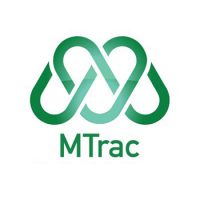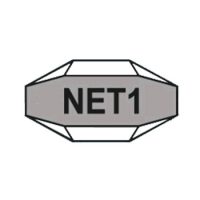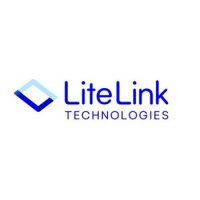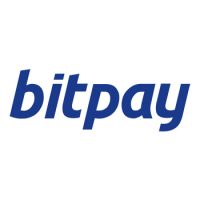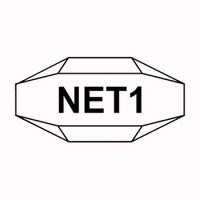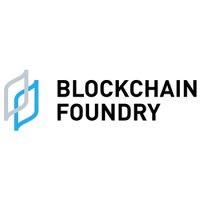Blockchain Press Releases
5G Infrastructure Market size to grow by USD 95.89 billion from 2023 to 2030; Demand for improving the internet speed & bandwidth to boost the market growth – Facts & Factor
NEW YORK, June 28, 2023 /PRNewswire/ — As per Facts and Factors study, the global 5G infrastructure market size was evaluated at $9.2 billion in 2022 and is slated to hit $95.89 billion by the end of 2030 with a CAGR of nearly 35% between 2023 and 2030.
Report Link with All Related Graphs & Charts: https://www.fnfresearch.com/5g-infrastructure-market
5G Infrastructure Market: Overview
5G infrastructure is referred to as a network of small & macro-base stations possessing edge computing capabilities. Moreover, it comprises standalone 5G infrastructures, which have their cloud network connecting 5G new radio technology and non-standalone infrastructure.
Key components of 5G infrastructure include RAN towers and 5G small cell infrastructure. Furthermore, 5G infrastructure provides low latency coverage for big data streams powering IoT equipment and semi-autonomous vehicles.
Get a Free Sample Report with All Related Graphs & Charts (with COVID 19 Impact Analysis): https://www.fnfresearch.com/sample/5g-infrastructure-market
Key Insights:
- As per the analysis shared by our research analyst, the global 5G infrastructure market is projected to expand annually at the annual growth rate of around 35% over the forecast timespan (2023-2030)
- In terms of revenue, the global 5G infrastructure market size was evaluated at nearly $9.2 billion in 2022 and is expected to reach $95.89 billion by 2030.
- The global 5G infrastructure market is anticipated to record massive growth over the forecast period owing to the massive demand for improved bandwidth connectivity along with a need for low latency for critical applications including drone connection and vehicle-to-everything.
- Based on the component, the hardware segment is predicted to contribute majorly towards the global market share over the forecast timeline.
- In terms of spectrum, the mmWave segment is projected to record the highest CAGR over 2023-2030.
- Based on the network infrastructure, the non-standalone segment is slated to dominate the segmental surge over the forecast period.
- On the basis of vertical, the enterprise segment is slated to dominate the segmental surge over the forecast period.
- Region-wise, the Asia-Pacific 5G Infrastructure market is projected to register the highest CAGR during the assessment period.
Facts and Factors published the latest report titled “5G Infrastructure Market Size, Share, Growth Analysis Report By Component (Hardware and Services), By Spectrum (Sub-6 GHz and mmWave), By Network Architecture (Standalone and Non-Standalone), By Vertical (Residential, Smart City, Enterprise, Industrial, Energy & Utility, Transportation & Logistics, Public Safety & Defense, Healthcare, Retail, and Farming), and By Region – Global and Regional Industry Insights, Overview, Comprehensive Analysis, Trends, Statistical Research, Market Intelligence, Historical Data and Forecast 2023 – 2030″ into their research database.
Industry Dynamics:
Global 5G Infrastructure Market: Growth Drivers
- Demand for improving the internet speed & bandwidth to drive the global market surge.
The growing need for improving operational efficiency and reducing processing costs will steer the growth of the 5G infrastructure market globally. Massive demand for improved bandwidth connectivity along with a need for low latency for critical applications including drone connection and vehicle-to-everything will boost the global market trends.
Furthermore, 5G infrastructure is predicted to improve the end-user experience with respect to virtual reality gaming, ultra-high-definition video, AR gaming, and seamless video calling. Apart from this, the healthcare sector in developed countries has highlighted the significance of remote diagnostics for patients and this has led to demand for seamless internet connectivity, thereby driving the expansion of the global market.
Furthermore, as per the GSMA, 5G networks have acquired nearly 50% of urban coverage in their deployment trials in India and China. The move will contribute notably towards the growth of the 5G infrastructure market across the globe.
Reportedly, in December 2022, Telefonica and Nokia combined sub-6 GHz frequencies in trials conducted on 5G standalone applications. Such moves will contribute notably towards the growth of the market across the globe.
Directly Purchase a Copy of the Report @ https://www.fnfresearch.com/buynow/su/5g-infrastructure-market
Global 5G Infrastructure Market: Segmentation
- The global 5G infrastructure market is sectored into the component, spectrum, network architecture, vertical, and region.
In terms of components, the global 5G infrastructure market is sectored into hardware and services segments. Furthermore, the hardware segment, which accrued more than 48% of the global market share in 2022, is predicted to maintain its segmental dominion in the projected timespan. The segmental growth in the forecasting years can be subject to the installation of 5G RAN along with base stations. The surging trend of installing centralized RAN is increasing significantly among the network solutions providers for reducing infrastructural costs, thereby driving segmental growth.
Spectrum-wise, the 5G Infrastructure industry across the globe is divided into Sub-6 GHz and mmWave segments. Moreover, the mmWave segment, which gathered a major share of the global industry in 2022, is forecast to register the fastest CAGR in the forecast timeframe.
The growth of the segment over 2023-2030 can be owing to high-band frequencies of mmWave that will provide improved bandwidth capacity having low latency. For instance, the federal communication commission launched a large number of mmWave frequencies with a view of providing low-latency connections for self-driven vehicles.
On the basis of the network architecture, the global 5G infrastructure market is divided into standalone and non-standalone segments. Moreover, the non-standalone segment, which accumulated the largest share of the global market revenue in 2022, is forecast to dominate the network architecture segment over the forecast timeframe.
The growth of the segment over 2023-2030 can be owing to the large-scale rolling out of non-standalone networks across the globe. For instance, AT&T and China Mobile Limited have installed a 5G non-standalone network for AR & VR gaming and UHD videos for improving seamless streaming.
Based on the vertical, the global 5G infrastructure industry is divided into residential, smart city, enterprise, industrial, energy & utility, transportation & logistics, public safety & defense, healthcare, retail, and farming segments. Moreover, the enterprise segment, which gathered the highest share of the global market revenue in 2022, is forecast to lead the vertical segment over the forecast timespan. The growth of the segment over 2023-2030 can be subject to humongous demand for fast bandwidth for non-stop connectivity during cloud computation.
Recent Developments:
- In the first half of 2022, T-Mobile U.S., Inc., a U.S.-based wireless network operator, and Crown Castle, a real estate investment firm based in the U.S., signed a twelve-year agreement for aiding the former’s 5G network across the U.S. The move is anticipated to embellish the expansion of the 5G infrastructure market in the U.S. in the coming years.
- In the second half of 2022, Telefonaktiebolaget LM Ericsson, a Sweden-based networking & telecommunications firm, and Becker Mining Systems AG, a supplier of mining tools, joined hands for exploring smart mining methods with the help of 5G network facilities. The move will embellish the market growth trends in Europe.
- In the third quarter of 2022, Nokia declared that it entered into a strategic partnership with Bharti Airtel for installing a 5G radio access network. The strategic initiative will expand the scope of growth of the 5G infrastructure business in India and across the globe.
Get More Insight before Buying@: https://www.fnfresearch.com/inquiry/5g-infrastructure-market
List of Key Players in 5G Infrastructure Market:
- Hewlett Packard Enterprise Development LP
- Huawei Technologies Co. Ltd.
- Ceragon
- Samsung Electronics Co. Ltd.
- Nokia Corporation
- JMA Wireless
- Telefonaktiebolaget LM Ericsson
- ZTE Corporation
- Altiostar
- Cisco Systems Inc.
- Casa Systems
- Mavenir
- NEC Corporation
- CommScope Inc.
- Parallel Wireless
- Comba Telecom Systems Holdings Ltd.
- Fujitsu Limited
- Airspan Networks
- Aviat Networks Inc.
- Others
Key questions answered in this report:
- What are the growth rate forecast and market size for 5G Infrastructure Market?
- What are the key driving factors propelling the 5G Infrastructure Market forward?
- What are the most important companies in the 5G Infrastructure Market Industry?
- What segments does the 5G Infrastructure Market cover?
- How can I receive a free copy of the 5G Infrastructure Market sample report and company profiles?
Report Scope:
|
Report Attribute |
Details |
|
Market size value in 2022 |
USD 9.2 Billion |
|
Revenue forecast in 2030 |
USD 95.89 Billion |
|
Growth Rate |
CAGR of almost 35% 2023-2030 |
|
Base Year |
2022 |
|
Historic Years |
2016 – 2021 |
|
Forecast Years |
2023-2030 |
|
Segments Covered |
By Component, Spectrum, End-Use Industry, Vertical, and Region |
|
Forecast Units |
Value (USD Billion), and Volume (Units) |
|
Quantitative Units |
Revenue in USD million/billion and CAGR from 2023 to 2030 |
|
Regions Covered |
North America, Europe, Asia Pacific, Latin America, and Middle East & Africa, and Rest of World |
|
Countries Covered |
U.S., Canada, Mexico, U.K., Germany, France, Italy, Spain, China, India, Japan, South Korea, Brazil, Argentina, GCC Countries, and South Africa, among others |
|
Companies Covered |
Hewlett Packard Enterprise Development LP, Huawei Technologies Co. Ltd., Ceragon, Samsung Electronics Co. Ltd., Nokia Corporation, JMA Wireless, Telefonaktiebolaget LM Ericsson, ZTE Corporation, Altiostar, Cisco Systems Inc., Casa Systems, Mavenir, NEC Corporation, CommScope Inc., Parallel Wireless, Comba Telecom Systems Holdings Ltd., Fujitsu Limited, Airspan Networks, Aviat Networks Inc., and others. |
|
Report Coverage |
Market growth drivers, restraints, opportunities, Porter’s five forces analysis, PEST analysis, value chain analysis, regulatory landscape, market attractiveness analysis by segments and region, company market share analysis, and COVID-19 impact analysis. |
|
Customization Scope |
Avail of customized purchase options to meet your exact research needs. https://www.fnfresearch.com/customization/5g-infrastructure-market |
Free Brochure: https://www.fnfresearch.com/ask-to-analyst/5g-infrastructure-market
Regional Dominance:
- North American 5G Infrastructure market to establish a dominant status over the forecast timeline.
North America, which garnered more than three-fourths of the global 5G Infrastructure market revenue in 2022, is anticipated to record lucrative growth during the projected timespan. The regional market expansion over 2023-2030 can be subject to the large-scale acceptance of advanced technologies such as IoT, smart wearable technologies, and self-driven cars in the U.S.
In addition to this, reliable and rapid connectivity is required for these tools offered by 5G infrastructure, thereby driving the regional market trends. Additionally, the presence of giant firms offering strong 5G infrastructure will amass massive revenue for the regional market in the coming decade.
Furthermore, the 5G Infrastructure industry in the Asia-Pacific zone is predicted to record the highest CAGR in the anticipated timeframe. The factors that are likely to impact the growth of the regional industry are an increase in the installation of 5G new radio infrastructure by key communication service providers by firms such as China Mobile Limited, NTT Docomo Inc., and KT Corporation.
Apart from this, governments in the countries such as South Korea, Japan, and China are trying to launch sub-6GHz and mmWave frequencies to fulfilling the demand for high-speed data connectivity.
Global 5G Infrastructure Market is segmented as follows:
5G Infrastructure Market: By Component Outlook (2023-2030)
- Hardware
- Services
5G Infrastructure Market: By Spectrum Outlook (2023-2030)
- Sub-6 GHz
- mmWave
5G Infrastructure Market: By End-Use Industry Outlook (2023-2030)
- Standalone
- Non-Standalone
5G Infrastructure Market: By Vertical Outlook (2023-2030)
- Residential
- Smart City
- Enterprise
- Industrial
- Energy & Utility
- Transportation & Logistics
- Public Safety & Defense
- Healthcare
- Retail
- Farming
5G Infrastructure Market: By Region Outlook (2023-2030)
North America
- The U.S.
- Canada
Europe
- France
- The UK
- Spain
- Germany
- Italy
- Rest of Europe
Asia Pacific
- China
- Japan
- India
- South Korea
- Southeast Asia
- Rest of Asia Pacific
Latin America
- Brazil
- Mexico
- Rest of Latin America
Middle East & Africa
- GCC
- South Africa
- Rest of Middle East & Africa
Browse Other Related Research Reports from Facts and Factors
- Industrial Robotics Market: According to the report published by Facts & Factors, the global industrial robotics market size was evaluated at $27.11 billion in 2022 and is slated to hit $60.57 billion by the end of 2030 with a CAGR of nearly 10.7% between 2023 and 2030.
- 5G Infrastructure Market: According to the report published by Facts & Factors, the global 5G Infrastructure market size was evaluated at $27.11 billion in 2022 and is slated to hit $60.57 billion by the end of 2030 with a CAGR of nearly 10.7% between 2023 and 2030.
- Mobile Gaming Market: According to the report published by Facts & Factors, the global mobile gaming market size was worth around USD 108.15 billion in 2022 and is predicted to grow to around USD 339.45 billion by 2030 with a compound annual growth rate (CAGR) of roughly 13.55% between 2023 and 2030.
- Speech and Voice Recognition Market: According to the report published by Facts & Factors, the global speech and voice recognition market size was evaluated at $17.18 billion in 2022 and is slated to hit $54.70 billion by the end of 2030 with a CAGR of nearly 14.10% between 2023 and 2030.
- SCADA Market: According to the report published by Facts & Factors, the global SCADA market size was evaluated at $9.9 billion in 2022 and is slated to hit $16.3 billion by the end of 2030 with a CAGR of nearly 7.9% between 2023 and 2030.
Browse through Facts and Factors’s coverage of the Global Technology & Media Industry
Follow Us on: LinkedIn | Twitter | Facebook
About Us
Facts and Factors is an obligated company. We create futuristic, cutting-edge, informative reports ranging from industry reports, and company reports to country reports. We provide our clients not only with market statistics unveiled by avowed private publishers and public organizations but also with vogue and newest industry reports along with pre-eminent and niche company profiles. Our database of market research reports comprises a wide variety of reports from cardinal industries. Our database is been updated constantly to fulfill our clients with prompt and direct online access to our database. Keeping in mind the client’s needs, we have included expert insights on global industries, products, and market trends in this database. Last but not the least, we make it our duty to ensure the success of clients connected to us—after all—if you do well, a little of the light shines on us.
Contact Us:
Facts and Factors
Tel: +1 347 690-0211
USA/Canada Toll-Free No. +44 2032 894158
Email: [email protected]
Website: https://www.fnfresearch.com/
Logo: https://mma.prnewswire.com/media/1981423/FnF_Research_Logo.jpg

Blockchain Press Releases
Bybit and St. Paul American Scholars School Furthers Partnership Commitment in Bybit’s HQ Visit

DUBAI, UAE, May 2, 2025 /PRNewswire/ — Bybit, the world’s second-largest cryptocurrency exchange by trading volume, extended a warm welcome to an international delegation from the St. Paul American Scholars (SPAS), a top international school in Korea on Monday. The visit is part of a joint initiative between Bybit and SPAS dedicated to fostering the next generation of blockchain innovators through a series of academic and educational programs.
Ryan Kim, Head of SPAS, and Jinny Kim, Director of SPAS, were greeted by Helen Liu, COO of Bybit at the Bybit headquarters in Dubai. The official visit underscores the institutions’ shared commitment to building the partnership from the ground up, and creating a knowledge base to prepare SPAS students for the future of technology and the blockchain-enabled economy.
In the academic year of 2025/26, Bybit has committed a $100,000 scholarship to 300 SPAS students of St. Paul American Scholars (SPAS). The broader theme of the collaboration centers on collective learning and community sharing, which aligns with SPAS’s philosophy of building a closely knitted community for educators, parents, and students. Bybit will organize interactive educational sessions on campus to fill the knowledge gap between the demands for future-ready skills and traditional academic resources.
The fast moving blockchain landscape is central to a changing world. Parents and students today are increasingly aware of the possibilities and potential challenges of the dawning on-chain economy. The new dynamics will require creators and contributors to be equipped with understanding of blockchain technologies, to develop their passion, and to project their creativity onto positive causes. Through workshops and interactive events, the Bybit and SPAS initiative stands to leave a profound impact on blockchain education for international students in SPAS.
SPAS representatives boarded the crypto express to the world of digital assets at the Bybit headquarters, sharing unique perspectives as educators and first-hand insights from Liu at the frontier of the digital economy.
“We are proud to welcome the SPAS family to Bybit’s headquarters, and we hope this will become the starting point of SPAS students’ blockchain journey. The value of blockchain education is not only giving students a headstart in understanding the digital economy, but also to inspire them to think about changing the world for the better with a powerful technology that will one day be entirely at their disposal,” said Helen Liu, COO of Bybit.
“It is a great honor for Saint Paul International School to establish a meaningful partnership with Bybit, a global leader in blockchain technology. This visit to Bybit’s headquarters in Dubai was more than just a meeting; it was a precious opportunity to build a foundation of deep mutual trust,” said Ryan Kim, Head of SPAS. “Bybit’s warm-hearted commitment to providing scholarships for Saint Paul International School students and planning continuous social contribution programs deeply moved us all. We firmly believe that, with its sincere vision and values, Bybit will continue to shine as a world-leading company,” he said.
The SPAS delegation toured the Bybit Crypto Ark Experience Store, a new venue at Bybit’s Dubai headquarters that showcases blockchain innovation and provides an open space for crypto collaborations. Since opening, the store has attracted hundreds of visitors, entrepreneurs, and crypto enthusiasts contributing to the regional ecosystem.
Established in 2015, SPAS operates four campuses across Korea’s major metropolitan areas and is recognized as a leading American educational institution with full accreditation from multiple organizations. SPAS also offers international exchange programs through partnerships with schools in New York, Canada, and the UK, providing students with opportunities to experience diverse cultures and global perspectives.
#Bybit / #TheCryptoArk
About Bybit
Bybit is the world’s second-largest cryptocurrency exchange by trading volume, serving a global community of over 60 million users. Founded in 2018, Bybit is redefining openness in the decentralized world by creating a simpler, open and equal ecosystem for everyone. With a strong focus on Web3, Bybit partners strategically with leading blockchain protocols to provide robust infrastructure and drive on-chain innovation. Renowned for its secure custody, diverse marketplaces, intuitive user experience, and advanced blockchain tools, Bybit bridges the gap between TradFi and DeFi, empowering builders, creators, and enthusiasts to unlock the full potential of Web3. Discover the future of decentralized finance at Bybit.com.
For more details about Bybit, please visit Bybit Press
For media inquiries, please contact: [email protected]
For updates, please follow: Bybit’s Communities and Social Media
Discord | Facebook | Instagram | LinkedIn | Reddit | Telegram | TikTok | X | Youtube

Photo – https://mma.prnewswire.com/media/2678692/Bybit.jpg
Logo – https://mma.prnewswire.com/media/2267288/Logo.jpg
![]() View original content:https://www.prnewswire.co.uk/news-releases/bybit-and-st-paul-american-scholars-school-furthers-partnership-commitment-in-bybits-hq-visit-302445132.html
View original content:https://www.prnewswire.co.uk/news-releases/bybit-and-st-paul-american-scholars-school-furthers-partnership-commitment-in-bybits-hq-visit-302445132.html

Blockchain Press Releases
From Exchange to Ecosystem Builder: MEXC Celebrates 7th Anniversary at TOKEN2049 Dubai with $300M Ecosystem Development Fund Launch

VICTORIA, Seychelles, May 2, 2025 /PRNewswire/ — MEXC, a leading global cryptocurrency exchange serving over 36 million users, concluded its successful participation as a Title Sponsor at Token2049 Dubai, where the company celebrated its milestone 7th anniversary and announced a groundbreaking $300 million ecosystem development fund.
7 Years of Excellence: A Foundation for Ecosystem Expansion
The premier crypto event, which took place from April 30 to May 1, 2025 in Dubai, provided MEXC with the perfect platform to commemorate seven years of growth and innovation in the cryptocurrency space. During the celebratory “Celebra7e MEXC Cocktail Party”, Tracy Jin, COO of MEXC, delivered an inspiring opening speech highlighting the exchange’s remarkable journey.
“Seven years may sound short, but in the fast-moving world of crypto, it’s a lifetime,” Jin told attendees. “To thrive in this ever-evolving space takes resilience, vision, and trust—and we’ve only made it this far because of you.”
Jin revealed impressive growth metrics: the MEXC team has nearly doubled to 2,000 employees across Growth, R&D, and Business Support divisions. The platform now offers more than 3,000 crypto assets and has built a community of over 2.25 million Twitter followers and approximately 193,000 Telegram members.
“We’ve also hosted over 2,293 airdrop events, distributing over $136 million in rewards,” Jin added. “This is our way of thanking you for your ongoing trust and loyalty.”
$300 Million MEXC Ecosystem Development Fund Unveiled
The highlight of MEXC’s Token2049 Dubai participation was the official announcement of its $300 million Ecosystem Development Fund, signaling the company’s strategic evolution from an exchange service to a comprehensive ecosystem builder. The five-year fund represents MEXC’s commitment to fostering blockchain innovation across multiple sectors.
The fund will focus on strategic investments in public chains, stablecoins, wallets, and media platforms, providing not only financial backing but also leveraging MEXC’s exchange business cooperation to deliver enhanced value to portfolio projects. This dual approach positions fund recipients to benefit from both capital investment and operational synergies within the MEXC ecosystem.
“After seven years of market resilience, MEXC is uniquely positioned as a trusted ecosystem partner,” said Tracy Jin. “This fund represents our vision for the future of decentralized finance and our commitment to supporting the next generation of blockchain innovations.”
IgniteX: $30 Million CSR Initiative for Web3 Talent Development
Alongside the ecosystem fund, MEXC Ventures launched “IgniteX” – a $30 million, five-year CSR initiative to foster Web3 talent and innovation. The program will support early-stage startups, research, developer communities, and academic institutions, with focus on decentralized infrastructure, AI-blockchain integration, stablecoins, and fintech. IgniteX combines mentorship, education, and funding to build a future-ready ecosystem and prepare the next generation of Web3 users and leaders.
Industry Insights Shared at Panel Discussion
MEXC’s presence at Token2049 Dubai extended beyond celebrations and announcements to include thought leadership. Tracy Jin participated in a panel discussion titled “What’s Next for Crypto Markets: The Exchange Perspective” on the OKX main stage on 1 May. The discussion explored upcoming trends, challenges, and opportunities in the cryptocurrency exchange sector, with Jin offering insights drawn from MEXC’s seven years of operational experience.
During the panel, Jin emphasized MEXC’s continued focus on product innovation and market expansion while maintaining its core commitment to being “Your Easiest Way to Crypto” for users worldwide.
Successful Side Events Strengthen Community Connections
MEXC hosted multiple successful side events throughout TOKEN2049 Dubai, including the “Celebra7e MEXC Cocktail Party,” “Dao People x MEXC: VIP Party” at BIRDS, a “TR KOL Exclusive Yacht Party” aboard Xclusive Yachts, and participation in the “AFTER2049” event at Be Beach. These gatherings provided valuable networking opportunities for industry professionals, partners, and MEXC community members.
At the company’s exhibition booth, MEXC showcased its revolutionary DEX+ platform and displayed a collection of seven limited-edition anniversary merchandise items that proved popular with attendees. Throughout the conference, MEXC representatives conducted product demonstrations, engaged with visitors, and discussed potential partnerships.
Behind the scenes, Jin noted that MEXC’s service team has resolved more than 1 million user requests and recovered over $1.8 million in user assets—underscoring the company’s commitment to security and user experience.
Looking Ahead
As Token2049 Dubai concluded, MEXC’s successful participation not only celebrated its past achievements but also laid the groundwork for its future vision. The announcement of the $300 million Ecosystem Development Fund, combined with ongoing product innovations and market expansion efforts, positions MEXC for continued growth in its eighth year and beyond.
About MEXC
Founded in 2018, MEXC is committed to being “Your Easiest Way to Crypto.” Serving over 36 million users across 170+ countries, MEXC is known for its broad selection of trending tokens, everyday airdrop opportunities, and low trading fees. Our user-friendly platform is designed to support both new traders and experienced investors, offering secure and efficient access to digital assets. MEXC prioritizes simplicity and innovation, making crypto trading more accessible and rewarding.
MEXC Official Website | X | Telegram | How to Sign Up on MEXC
Risk Disclaimer:
The information provided in this article regarding cryptocurrencies does not constitute investment advice. Given the highly volatile nature of the cryptocurrency market, investors are encouraged to carefully assess market fluctuations, the fundamentals of projects, and potential financial risks before making any trading decisions.

Photo – https://mma.prnewswire.com/media/2677827/1920_1080.jpg
Logo – https://mma.prnewswire.com/media/2668118/MEXC_new_Logo.jpg
![]() View original content:https://www.prnewswire.co.uk/news-releases/from-exchange-to-ecosystem-builder-mexc-celebrates-7th-anniversary-at-token2049-dubai-with-300m-ecosystem-development-fund-launch-302444954.html
View original content:https://www.prnewswire.co.uk/news-releases/from-exchange-to-ecosystem-builder-mexc-celebrates-7th-anniversary-at-token2049-dubai-with-300m-ecosystem-development-fund-launch-302444954.html

Blockchain Press Releases
Interlace Debuts at Token2049 to Accelerate Web2-Web3 Integration Across MENA

NEW YORK, May 2, 2025 /PRNewswire/ — Interlace, a pioneering financial innovation platform bridging traditional (Web2) and decentralized (Web3) ecosystems, is making a high-impact debut at Token2049, the world’s largest cryptocurrency conference. The event draws more than 15,000 global Web3 leaders, investors, developers, and policymakers to the heart of the Middle East’s burgeoning digital economy.
As the MENA region solidifies its status as a strategic launchpad for blockchain and digital finance, Interlace is leveraging Token2049 to highlight its global ambitions and regional integration efforts. Through a combination of keynote speeches, panel participation, side events, and interactive showcases, the company will spotlight its technological breakthroughs, regulatory strategies, and innovative Web3 solutions designed to advance financial inclusion and digital infrastructure.
Token2049 has cemented its position as the premier global platform for blockchain dialogue and innovation. With MENA emerging as a magnet for crypto and fintech enterprises—thanks to its progressive regulatory framework and strong investor base—the event provides fertile ground for companies like Interlace to scale their operations in high-growth markets.
Driving Web3 Compliance and Strategy in the Middle East
Michael Wu, Founder and CEO of Interlace, was recently invited to speak at the event Mastering Web3 Finance and Compliance: Blockchain & Beyond, where he joined a panel discussion exploring regulatory frameworks and emerging trends in the Middle East’s Web3 ecosystem. Drawing on Interlace’s extensive global experience, Wu provided a deep dive into the region’s compliance landscape. He emphasized the UAE’s regulatory efficiency as a strategic advantage for Web3 companies, stating: “In MENA, it takes only a few months to obtain a Virtual Asset Service Provider (VASP) license, whereas the same process can take up to two years in Singapore. In the United States, conflicting federal and state regulations create persistent uncertainty for businesses.” This favorable regulatory environment, he noted, has enabled Interlace to accelerate its expansion into the Middle Eastern market.
Wu also outlined Interlace’s proactive compliance strategy, highlighting early regulatory investment as a foundation for building long-term competitive advantages. “We’ve secured key licenses—including MSB (Money Services Business), MSO (Money Service Operator), and VASP—across major markets such as Hong Kong, the U.S., and Europe,” he shared. He stressed the importance of integrating technology with compliance, citing the use of biometric solutions to streamline Know Your Customer (KYC) procedures. This approach not only ensures regulatory adherence but also enhances user accessibility. “Compliance is not a cost,” Wu asserted. “It’s the foundation of brand trust. For institutional partners and investors, regulatory compliance is non-negotiable—and critical for sustainable growth.”
Addressing the convergence of traditional finance and Web3, Wu presented Interlace’s multi-license model as a blueprint for cross-border innovation. “Our crypto payment card enables seamless interoperability between on-chain digital assets and off-chain consumer transactions,” he explained. “This functionality requires a high degree of cross-jurisdictional compliance.” Wu concluded by sharing that Interlace is actively expanding its footprint in the Middle East, bringing its regulatory expertise and compliance technology to support the region’s rapidly evolving blockchain infrastructure.
Unveiling Innovation at Premier Side Events
Beyond the main conference, Interlace will engage audiences at high-profile side events including 1001 Crypto Nights, Gilded Mirage, and the Hack Seasons Conferencei. These gatherings delve into themes such as the convergence of legacy finance with decentralized protocols and the region’s unique role in accelerating Web3 adoption.
Interlace will showcase its Card-as-a-Service (CaaS) API solutions tailored for the PayFi sector, as well as its custom-designed physical banking cards—which double as exclusive, limited-time gift cards. These cards demonstrate real-time “on-chain to off-chain” transaction capabilities, offering attendees a tangible experience of seamless Web3-enabled payments.
A Strategic Leap Toward Global and Regional Impact
Interlace’s presence at Token2049 is more than a product showcase—it represents a pivotal step in the company’s global expansion and MENA market penetration. As the company deepens its engagement in the region, it aims to collaborate with local institutions to build robust, inclusive digital financial ecosystems.
Wu reflected on the significance of the Middle East in shaping the future of blockchain finance: “The Middle East is rapidly evolving from an energy stronghold into a center of digital innovation. Its open regulatory approach and dynamic capital environment make it a strategic region for Web3 transformation. At Interlace, we’re committed to co-creating resilient financial infrastructure with local partners—enabling businesses and users to fully benefit from the potential of blockchain technology. We see MENA as a future global benchmark for Web3 applications.”
![]() View original content:https://www.prnewswire.co.uk/news-releases/interlace-debuts-at-token2049-to-accelerate-web2web3-integration-across-mena-302444943.html
View original content:https://www.prnewswire.co.uk/news-releases/interlace-debuts-at-token2049-to-accelerate-web2web3-integration-across-mena-302444943.html

-

 Blockchain Press Releases4 days ago
Blockchain Press Releases4 days agoBTC Pricing Alert: Bitcoin Rebounds as Trump’s Trade War Comments Ignite Market Rally – Bybit x Block Scholes Report
-
Blockchain3 days ago
PFM Disrupts Wealth Management in 2025: Earn Digital Assets Risk-Free with Zero Fees
-
Blockchain1 day ago
Mercurity Fintech’s Chaince Securities Appointed as Strategic Advisor for Classover’s Solana-Focused Treasury Strategy
-

 Blockchain3 days ago
Blockchain3 days agoBlocks & Headlines: Today in Blockchain – April 29, 2025 | Deloitte, TRON DAO, Miden, JPMorgan, Nuvve
-
Blockchain3 days ago
Veriff and Legitify Partner to Streamline Cross-Border Digital Notarisation
-

 Blockchain Press Releases2 days ago
Blockchain Press Releases2 days agoWelcome to the 1V1 Trading Arena: Bybit Blends Gameplay With Real Crypto Wins for Pro and New Users
-

 Blockchain Press Releases4 days ago
Blockchain Press Releases4 days agoBybit Introduces API Access for On-Chain Earn and Flexible Savings
-

 Latest News2 days ago
Latest News2 days agoBetbazar Explores Cricket in iGaming: What Operators Need to Know






